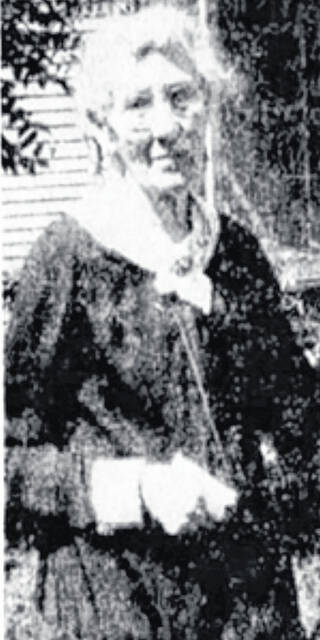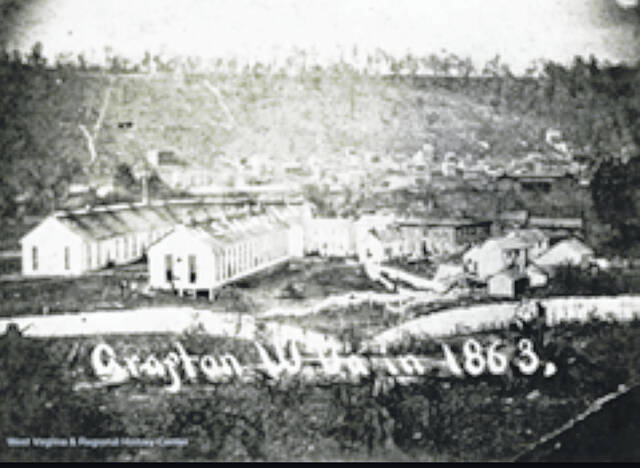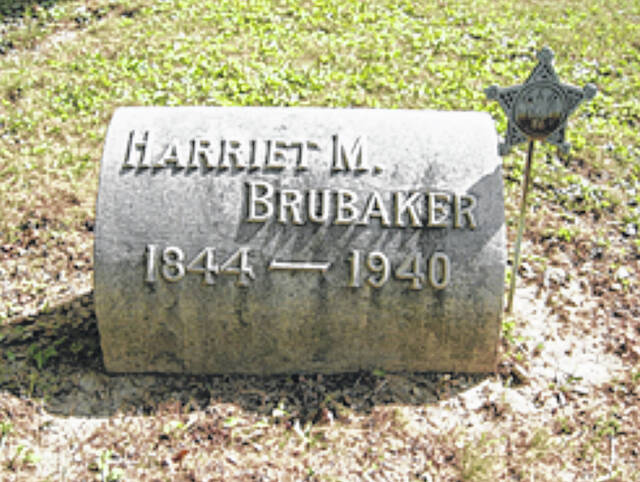


Editor’s note: This is one in a series of historical articles about Champaign County’s part in the Civil War. The articles are leading up to a re-dedication ceremony for the Man on the Monument in Urbana on December 5 at 3 p.m.
After watching her two older brothers march off to serve in the Army during the Civil War, Harriet Manning wondered how she might be able to help, too.
In 1862, an opportunity arose when a friend who had volunteered for nursing duty asked if Harriet would accompany her as a companion to Grafton, West Virginia. At that time, Grafton was a strategic target during the war due to having control of a main junction of the B&O Railroad. The railroad had access to the coal fields and steel mills in the North, and both sides of the war sought control of the railroad for the movement of troops and supplies. Following the nearby Battle of Philippi in 1861, the wounded soldiers were treated in tents, in wagons, or on the battlefield. At this same battle, the Confederacy had surrendered many buildings in Grafton, including a hotel. With the overwhelming number of wounded men, the Union Army converted this hotel into a hospital, and injured soldiers from other battles were quickly transported there.
Once arriving in Grafton, Harriet was so distraught by the plight of these sick soldiers, she immediately volunteered to aid alongside her friend. With over 125 patients needing help at the hospital, there were only three women working, including herself. None of them had previous nursing experience, but with direction from the medical staff, they quickly familiarized themselves with the duties.
These three women worked tirelessly during the daytime, while men would take over the care in the evening hours. Harriet’s first assignment was to the typhus ward, where she oversaw over 30 men suffering from typhoid fever. Typhoid is an intestinal infection that causes fever, constipation, headaches, and vomiting. She spent hours providing comfort and encouragement to these men, feeding them, writing letters to their families, reading and praying, as well as giving medical treatments with brandy, turpentine and hemlock. Though she initially joined as a volunteer, the Army noticed her great qualities and soon enrolled her as a regular nurse giving her the usual salary of the time. After a year of these arduous nursing duties, Harriet began suffering from exhaustion and fever, and she made the hard decision to return home to Ohio to recover.
Shortly afterwards in 1865, the Manning family moved to St. Paris, Ohio. Harriet’s father was a minister who transferred to serve the St. John’s Lutheran Church there. This is where Harriet met and married her husband, Isaac Brubaker, and moved to the corner of Walnut and South Springfield Street. Mr. Brubaker was a banker and together they raised one daughter.
For the next 20 years, Harriet was associated with the Women’s Christian Temperance Union and the Red Cross. She volunteered her time and services to both organizations. After the death of her husband in 1892, Harriet and her daughter Mary began traveling south to Arizona to spend their winters there. Mary was suffering from tuberculosis and their hope was the warm weather would improve her condition. It did not, and Mary passed away at the age of 22 years.
In 1893, Harriet was recognized by the U.S. government for her Civil War service and was granted a monthly pension. By 1936, this pension gave her an income of $30 a month. In the 1930’s, Harriet was invited to Columbus as a guest for the annual encampment of the Grand Army of the Republic. Here she was honored with a special place to sit on the platform during their sessions. She was given personal introductions and presented with a basket of roses by the Women’s Relief Corp.
In 1938, the St. John’s Lutheran Church in St. Paris that had served the Manning and Brubaker families was disbanded. Harriet Brubaker was still an active member, and all attempts were made to hold this tiny congregation together as a courtesy for Harriet, but the financial conditions and the dwindling membership made it impossible to keep open. Despite their efforts, the furnishings and building were sold.
Harriet was always a hale and hearty woman, even into her older years. She found joy while working in her garden and growing many beautiful flowers. She never lost interest in current events and proved herself to be an inspiration to the St. Paris community. At her death in 1940, she was the last Civil War nurse in the state of Ohio. With the American Legion taking the lead, a call was sent out to every patriotic organization in the county asking to send delegates to her funeral. And in response, all Champaign County veterans groups and auxiliaries, including the Boy Scouts, attended to pay their respects to this nursing pioneer. State Legion officials also attended; all being fully dressed in uniforms. Harriet Manning Brubaker was buried in Spring Grove Cemetery, St. Paris, in a flag-draped coffin, with full military honors ending with a volley from the firing squad and the sound of taps by a bugler.




